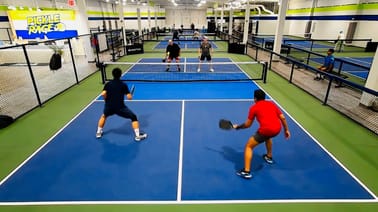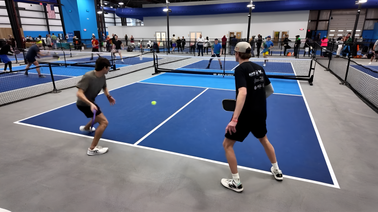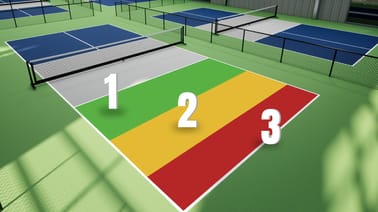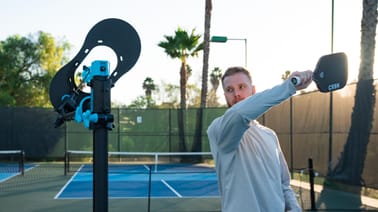
Stacking in pickleball – the strategy where teammates line up on one side of the court on a serve and then switch to their favored positions during the point – doesn't have to follow the same theory every time it is implemented.
The traditional strategy behind pickleball stacking is to put the weaker player on the right side of the court. Position the better player on the left, and let their forehand cover the middle.
Recent experiments in game strategy have questioned that logic.
Some partnerships have found success by placing the "weaker player," or the player taking less of the court, on the left side.
Why? Because if one of the teammates is heavily targeted and playing most of the shots, you might as well let them use their forehand.
By shifting this player to the left side, they can become more of a threat.
If the weaker player is being targeted, the left side of the court makes for an easier erne opportunity (more on how to counter targeting here).
They can also shift left toward the sideline so that any ball played to their backhand is likely going to be out of bounds.
A potential disadvantage to this strategy
This strategy does, however, depend on the proficiency of the stronger player's backhand.
Their backhand has to be enough of a threat to protect the middle; otherwise, this strategy is not likely to work.
That is why it is only used by certain pros like Riley Newman, James Ignatowich, and Anna Leigh Waters.
If you're in a pinch on the court, try mixing up the stack to make your team more offensive.
We send our newsletter subscribers valuable pickleball tips like these three days a week. Up your game by subscribing now:









